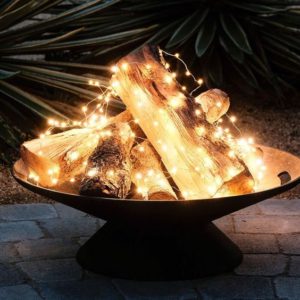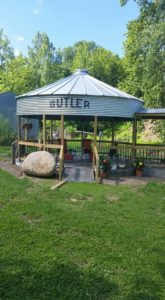The emerald ash borer is a threat to all the ash trees in our state. None of our native ash have any resistance to this insect and once attacked, unless insecticides treatments are started within a year or two, the tree will die.
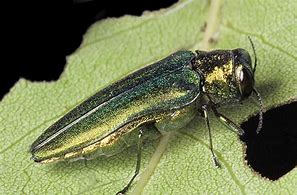
When tree owners notice dieback and decline of their ash trees or see small holes in the tree trunk they may wonder whether their tree is infested with emerald ash borer. However, there are many possible reasons an ash tree is declining, most commonly drought stress. These trees are often attacked by one of the many other boring insects and these insects may be confused with emerald ash borer. The first step is to be sure the tree is an ash tree. The emerald ash borer infests only ash trees so identifying the tree is the first step in the diagnostic process. Emerald ash borer attacks all the native ash common to South Dakota: black ash, green ash, and white ash along with their many cultivars. The Manchurian ash, native to Asia, is not usually killed by an attack unless drought-stressed.
The tree starts healthy and then starts to decline by dieing branches here and there followed by bark falling off the trunk. Watersprouts and woodpeckers also are symptoms of borer infected trees.
There are many insects that infest ash trees and each makes a characteristic exit hole where the adult emerges. They each have distinctive patterns to the tunnels made by the larvae as they burrow beneath the bark. These two features, the exit holes made by the adults and the tunneling pattern by the larvae, can be used as aids to separate them from the emerald ash borer.
The other insects are: Ash/lilac borer is a common insect on the Northern Plains that attacks the lower (10 to 15 feet) trunks of ash trees and the bases of lilac canes
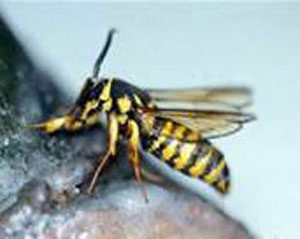 .
.
Banded ash borer and the redheaded ash borer are probably the most common borers of dead or dying ash trees on the Northern Plains.
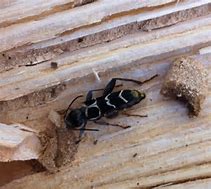
Carpenterworm is another native boring insect of ash trees, but it can also be found infesting cottonwoods, poplars and willows.

Ash bark beetles are very common in dying ash trees, typically in the branches. There are at least two species on the Northern Plains, the eastern ash bark beetle and the western ash bark beetle.
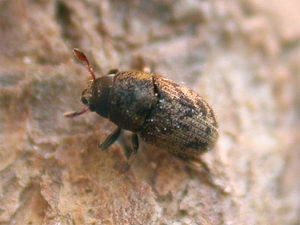
Now along with all the other borers, the emerald ash bores show up mainly East River now but it is working its way west.
Insecticide Management Options
There are many different active ingredients, products, and application methods available for managing emerald ash borer. Some products are available for homeowners to use, but the most effective are restricted to commercial applicators.
When is treatment necessary?
Treatments are recommended in early spring.
What treatments are available?
Treatments are not a vaccine. They must be applied either annually or biennially depending on the application and chemical used usually in early June. Several products can also be used therapeutically, to kill an existing infestation in a tree, while others only protect a tree from becoming infested.
There are three methods of applying insecticides to your tree.
Soil Treatments
Require annual application, restricted to mid-spring and autumn, and are used to protect trees from becoming infested. There are insecticides available to homeowners as soil trenches. Commercial applications may also use soil injections. Insecticides delivered as a soil drench should be applied at the base of the trunk, within a foot, with the sod or mulch pulled away before making the application. The sod or mulch can be put back in place after the insecticide solution soaks into the soil. Soil injections should be made within 18 inches of the base of the trunk and injected to a depth of 2 to 4 inches. Injections made farther from the
Systemic Bark Sprays
Insecticides can be sprayed on the lower trunk of the tree (the lower 6 feet). These chemicals are absorbed through the bark. They are carried up by the sap flow to kill the larvae beneath the bark and adult beetles feeding on the leaves. There is one active ingredient that can be delivered via trunk spray. The spray does not need to be made at high pressure (the water pressure coming from a garden hose is sufficient). Surfactants may be used to improve absorption through the bark but are not necessary.
Trunk Injection
Insecticides can be delivered by directly injecting into the tree. Trunk injections do create wounds in the tree, but if the injections are done low on the trunk, at the flare and not adjacent to a previous injection site, then the injury is minimal, and the insecticide will be distributed throughout the canopy. The uptake and distribution of trunk injected insecticide is quicker than that delivered via the soil. The soil should be moist, not dry or wet, to improve uptake of the chemical through the tree. Watering the soil around the tree a day before injection will sufficiently irrigate the soil.
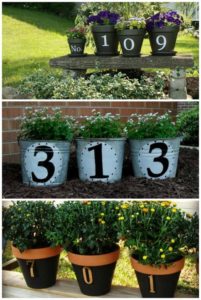
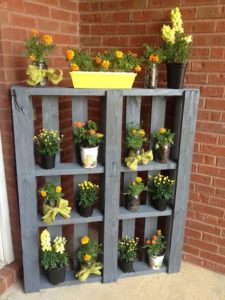


 .
.


